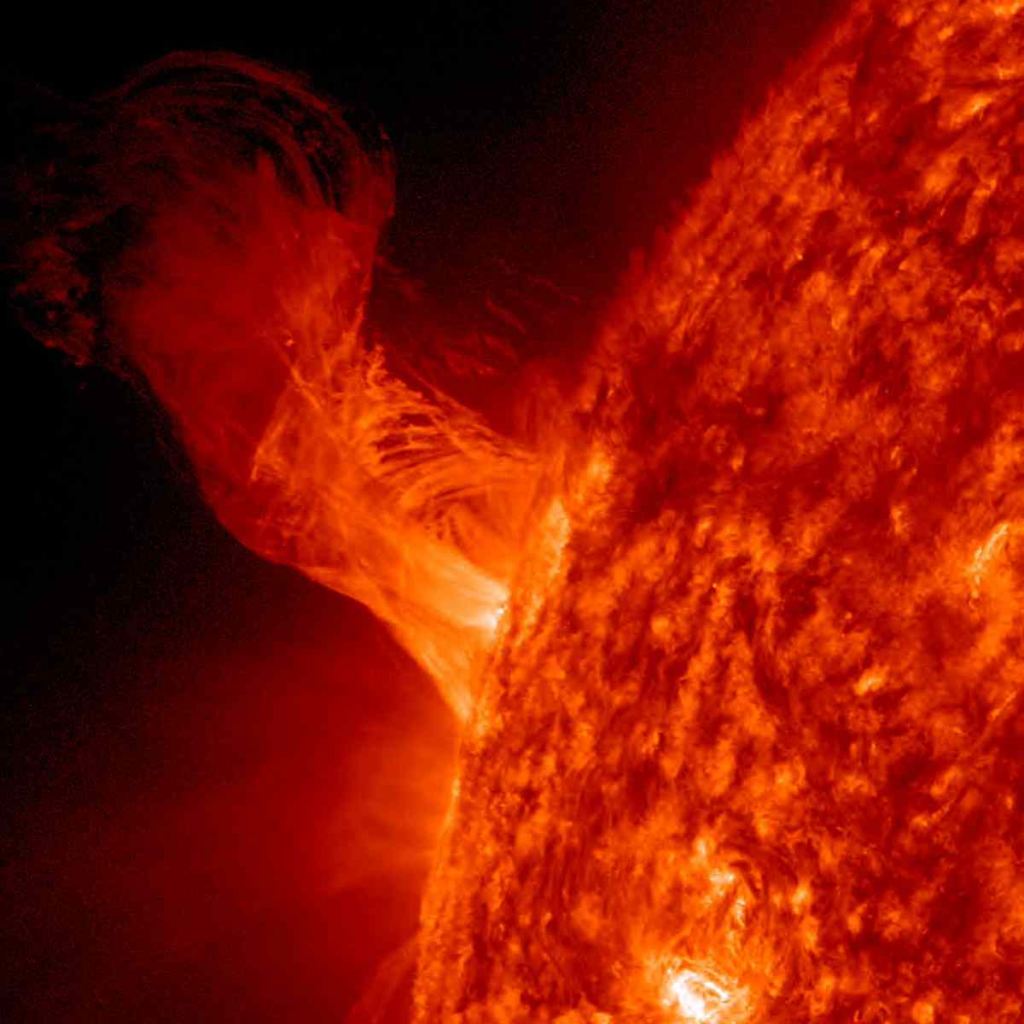
This NASA/ESA Hubble Space Telescope image shows the bright star-forming ring that surrounds the heart of the barred spiral galaxy NGC 1097, a Seyfert galaxy.
The larger-scale structure of the galaxy is barely visible.
Its comparatively dim spiral arms, which surround its heart in a loose embrace, reach out beyond the edges of this frame.
This face-on galaxy, lying 45 million light-years away from Earth in the southern constellation of Fornax (The Furnace), is particularly attractive for astronomers.
Lurking at the very centre of the galaxy, a supermassive black hole 100 million times the mass of our Sun is gradually sucking in the matter around it.
The area immediately around the black hole shines powerfully with radiation coming from the material falling in. The distinctive ring around the black hole is bursting with new star formation due to an inflow of material toward the central bar of the galaxy.
These star-forming regions are glowing brightly thanks to emission from clouds of ionised hydrogen.
The ring is around 5000 light-years across, although the spiral arms of the galaxy extend tens of thousands of light-years beyond it.
REUTERS/NASA/ESA/Hubble/Handout (OUTER SPACE - Tags:
ENVIRONMENT SCIENCE TECHNOLOGY) FOR EDITORIAL USE ONLY. NOT FOR SALE FOR MARKETING OR ADVERTISING CAMPAIGNS. THIS IMAGE HAS BEEN SUPPLIED BY A THIRD PARTY. IT IS DISTRIBUTED, EXACTLY AS RECEIVED BY REUTERS, AS A SERVICE TO CLIENTS

A solar eruption is seen rising up from the sun in this NASA image on December 31, 2012 and released to Reuters January 4, 2013.
Magnetic forces drive the flow of plasma, but without sufficient force to overcome the sun's gravity much of the plasma falls back into the sun according to NASA.
The length of the eruption extends about 160,000 miles out from the Sun.
With Earth about 7,900 miles in diameter, this relatively minor eruption is about 20 times the diameter of planet earth.
REUTERS/NASA/SDO/Handout (OUTERSPACE - Tags:
ENVIRONMENT SCIENCE TECHNOLOGY) FOR EDITORIAL USE ONLY. NOT FOR SALE FOR MARKETING OR ADVERTISING CAMPAIGNS. THIS IMAGE HAS BEEN SUPPLIED BY A THIRD PARTY. IT IS DISTRIBUTED, EXACTLY AS RECEIVED BY REUTERS, AS A SERVICE TO CLIENTS

FILE - This file image provided by NASA shows the base of Mount Sharp on Mars.
The Curiosity rover is set to drive toward the mountain in mid-February after drilling into a rock.
The image was taken by Curiosity's 100-millimeter Mast Camera on Aug. 23, 2012.
Scientists enhanced the color in one version to show the Martian scene under the lighting conditions we have on Earth, which helps in analyzing the terrain. (AP Photo/NASA/JPL-Caltech/MSSS, File)

This artist's conception shows an Orion capsule at the L2 point on the farside of the moon.

Twin Space Exploration Vehicles approach an asteroid with the Multi-Person Crew Vehicle docked to a habitat in the background.

A picture is worth a thousand words.
No comments:
Post a Comment